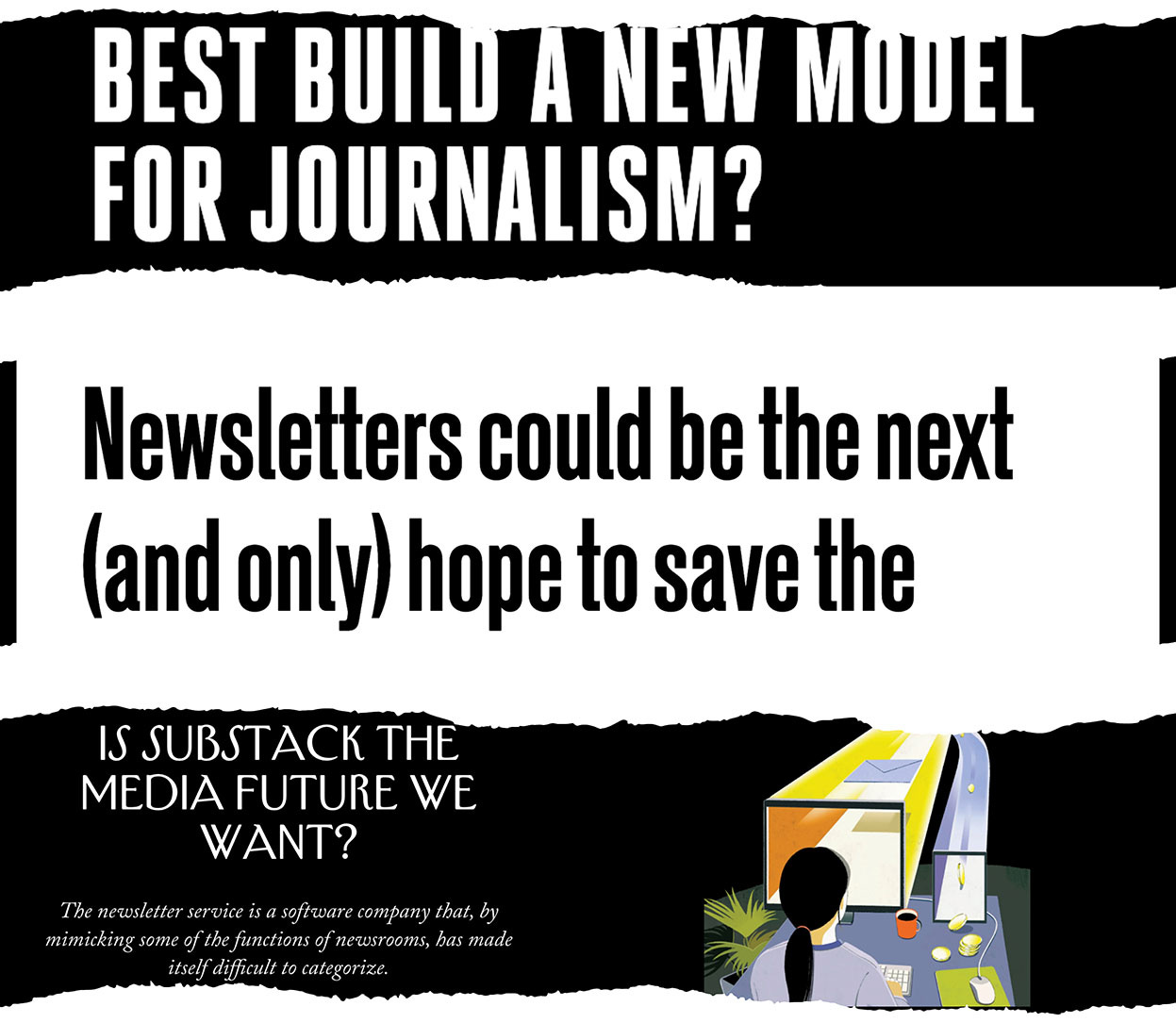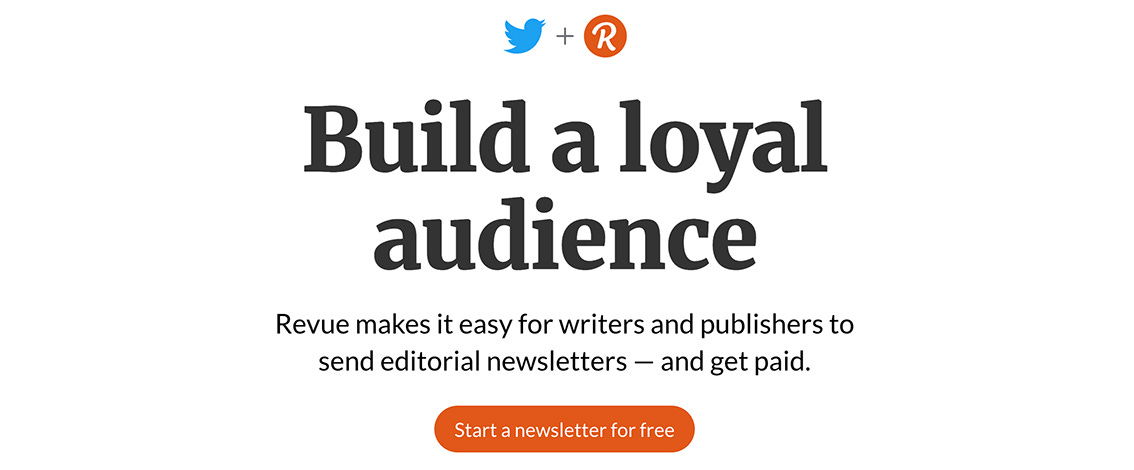Newsletters are not meant to save journalism
Behold media’s otherworldly talent of keeping the hope alive: the recycled hype around “new” methods of presenting (and charging for) online content is back
Eleven years ago, at a press event on January 2010, Apple introduced the iPad in that memorable keynote that The Wall Street Journal anticipated with the famous “last time there was this much excitement about a tablet, it had some commandments written on it,” a hell of a sentence that Steve Jobs slipped into his presentation.
One of the headliners of that day, besides the iPad itself, was another newspaper though: The New York Times. When Jobs showed how browsing the web on an iPad was “really great,” the Times was the first website he accessed; when a few selected developers were announced to show their new iPad apps, the newspaper was also one of the firsts to take the stage.
Was there a PR strategy behind all this love for The New York Times? Of course, there was. But that relationship worked both ways. Just as Apple was going all-in to build a market from the ground up and needed as much free publicity as possible, news media companies saw the iPad as “the next version of digital journalism,” to use the same words that Martin Nisenholtz, from the Times, chose that day.
Eleven years later, however, the promise of a modern print media (holographic pages, live pictures and flying ads) never came true, and neither the iPad nor any other tablet became “the next version of digital journalism.” In the “end,” print media — or any other media for that matter — wasn’t able to fully comprehend and make use of all the features and particularities of that device. Eleven years later, journalism still hasn’t found the salvation it has been looking for.
The next in line, so it seems, are the publishing platforms and the newsletters. Again? Based on the number of headlines in the last few weeks, yes, again. “How could a startup newsletter disrupt the media industry,” “Is it the media future we want?” and, my favorite, “Newsletters could be the next (and only) hope to save the media.” That was me and Google alone for two minutes: there’s a lot more where these came from.
What do the iPad, all the publishing platforms and, ultimately, the newsletters have in common? The fascination, the fetish with “print”. Remember blogs?
Why doesn’t anyone foresee that streaming, ubiquitous computing or voice-controlled devices will save journalism at some point? Because none of them bring the convenience of the print format. The fetish only exists because if a blog, a tablet or, more recently, a publishing platform were really “the next version of digital journalism,” news media companies would be facing a much simpler transition: apply the same formula that has been used for four centuries, and done.
In the past few months, newsletters and publishing platforms have made their comeback as media darlings. Medium (a consolidated player), Substack (a player seeking consolidation), and the other members of an expanding market watched closely the acquisition of Revue by Twitter, and witnessed the rumor — promise? threat maybe? — that Facebook would be working on newsletter tools for journalists and writers.
Nothing against new publishing platforms or new newsletter tools — clearly, just look where we are — but what if we examine them without trying to fix anything? What if we don’t “disrupt the media industry”? What if we don’t try to save journalism (for the millionth time)?
The paid newsletters market did not start “in the past few months,” of course; in fact, it hasn’t undergone any major changes in the past decade. This recycled media hype is the result of a blend of real perception — some key characters, like Glenn Greenwald and Casey Newton, made the transition to a newsletter career — and a highly abstract perception — the cyclical need for the media to promote the-next -best-thing within itself (pivot to video, pivot to podcast, pivot to newsletters etc.)
In late January, in the midst of this self-combustion, Twitter announced that it has acquired Revue, “a service that makes it free and easy for anyone to start and publish editorial newsletters.” Twitter’s blog post stated that their mission is to “help organizations and writers grow their readership faster and at a much larger scale than anywhere else.” Translation: don’t try to build a newsletter audience from scratch, grab all the followers you already have on Twitter.
Three days later, the Facebook lobbying machine, which never fails, went into action with the usual rumor: Facebook is trying to clone something. This time, the social network would be working on a newsletter model that will be fully integrated into the Facebook ecosystem, in addition to “paid subscription tools to help journalists make money” from it. According to The New York Times, Zuckerberg’s “newsletter project” would be directly related to journalism since it would be part of “Facebook’s plan to provide more legitimate news sources.”
Some things are best left unsaid.
And, finally, last month, Twitter struck back with Super Follows, a Patreon-ish payment tool that will allow Twitter users to charge followers in exchange for extra content. According to Axios, this “extra content” can be “badges showing support” (lame), “bonus tweets” (bonus lame) or “a newsletter subscription” (not lame finally, that’s what Revue is for). Fun fact: the obsession with print is so impressive that Axios’ story didn’t even consider Twitter’s Spaces (its version of Clubhouse) as one of the possible features behind this new paywall.
On a 1–10 scale, what are the chances that there already are a couple articles “explaining” how Super Follows can save journalism? Eleven, of course. And the immediate reaction will probably be, since The New York Times has 49 million followers on Twitter (or since The Wall Street Journal has 18 million and so on), how many will be willing to join these companies’ Super Follows in exchange for extra content like audio-chat or a daily newsletter?
It is a rhetorical question, but the answer can be mounted on two “it depends”: 1) It depends on the price tag and where does this price fit in relation to the hundreds of subscriptions we already have. 2) It depends on what users will get in return. If they get a “badge showing support,” I’d say never mind.
In all honesty, I can see this Super Follows thing working for some people in some segments, as long as the “content creator” brings everything to the table — Spaces, Revue, exclusive entries, giveaways, cross collabs — and Twitter truly acts to improve, integrate and expand its new toys — otherwise, it will end up like IGTV; or worse, Periscope.
A possible consolidation of Twitter, Facebook, and other players in the paid newsletters and publishing platforms market is the final straw to catapult all this euphoria to that here-we-go-again degree — if not to save the journalistic companies, at least to save journalistic jobs. “The first thing I predict is chaos in newsrooms around the world. (…) A newspaper employee with 200,000 Twitter followers who converts 2.5 percent of them to Super Follows at $5 a month would gross $300,000,” wrote Casey Newton when he first knew about Twitter plans.
Newton’s assessment is not wrong, and although it seems like, I am not disagreeing with him. If you sensed a “but” coming, here it is… But the first thing I predict is, it won’t save news outlets for sure, and most likely it won’t save jobs either.
First off, neither those companies that have been in the newsletter market for years nor the new players that may join the club (such as Twitter and Facebook) see their business as a lifeline to anything but themselves. As much as the words “journalists” and “news sources” are strategically distributed in corporate blog posts and leaks to the press, none of them have created, or intended to create, a product to save journalism.
The endgame of all tech companies that manage user-generated content — newsletters, tweets, posts, photos, videos etc. — has always been to provide tools and resources to host and promote attractive and innovative material in order to increase audience, engagement and revenue.
Which leads us to the obvious conclusion. If the journalistic package is not attractive and innovative enough in the “old” media in order to increase audience, engagement and revenue, why the hell would it be on another platform?
It may sound rough, but two weeks ago, some of my colleagues learned this the hard way. Again. According to a data analysis in 45 markets by Northwestern University’s Medill Spiegel Research Center, 49% of local news outlets’ digital subscribers “didn’t go to the websites they had paid for even once a month.” I’m adding this unnecessarily because the whole situation is almost comical: they already paid for it, and half of them don’t even bother to access what’s in there — like never.
As it happens every time a significant number pops up about the news industry, reactions ranged from astonishment — “most shocking news-industry datapoint I’ve seen in a while” (Joshua Benton) — to sugarcoating — “this is a typical percentage for every newsroom we work with” (Nancy Lane). And in the midst of all of them, there is always one believer that promises a saving grace. Here’s Ed Malthouse’s, Spiegel’s Research Director, proposition: “Newsletters are really important because if people aren’t coming to you, then maybe you should go to them.”
Where does this faith that moves mountains come from? No idea, but it’s not by accident that the cult of print in the news industry is so powerful, after all it has provoked a collective fascination since the days when “some commandments” were written in a tablet. The problem is, sometimes, not even all this power is enough to perform a miracle of this magnitude.






